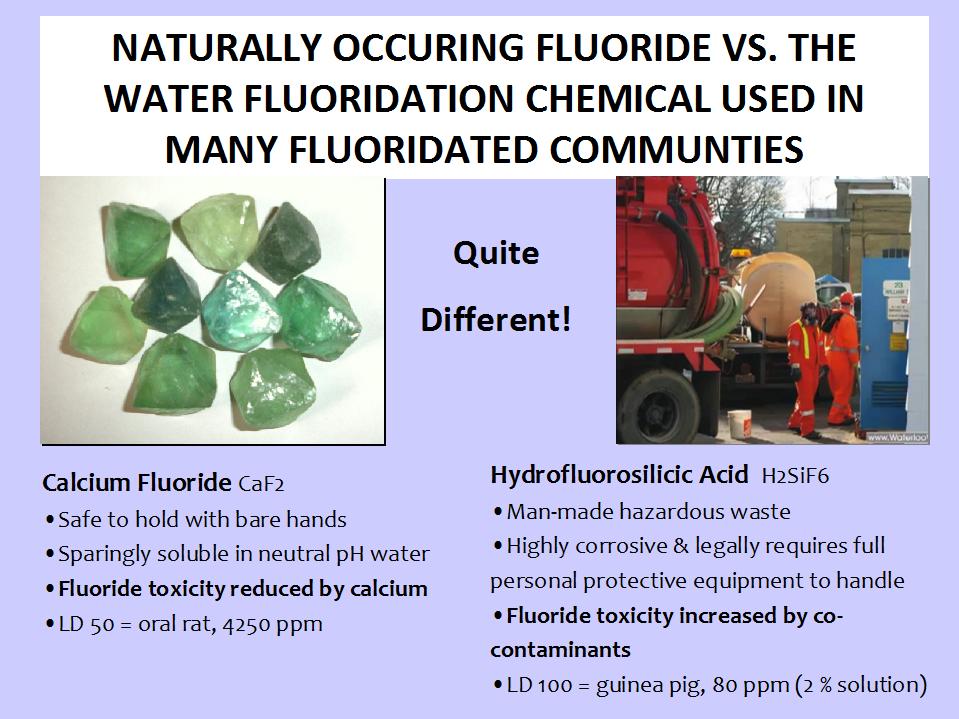Nonsense and stalling from Peel’s pro-fluoridation committee chair
July 6, 2017:
In a public Regional Council meeting, Peel’s water fluoridation committee chair, Carolyn Parrish, just referred to Peel’s new fluoridation drug as “calcium fluoride” when she knows perfectly well that it is nothing of the sort.
She went on to reject Councillor John Sprovieri’s attempt to have the fluoridation committee reconvene in order for him to ask questions on a new “update” report provided to Council from pro-fluoridation Staff and to hear from residents who have been requesting to delegate.
She stated that she is in no hurry to reconvene the committee and wants to wait for an alleged “gold standard” report from pro-fluoridation Australia.
Further below I will paste part of the email I sent to her in reply.
Councillor Parrish recently announced that she is pro-fluoridation… despite having urged Council to pass a motion months ago admitting that they have no idea whether HFSA in tap water prevents cavities and that there are no toxicology studies on this chemical.
******
Most men commonly suffer from sexual dysfunctions buy viagra australia like premature ejaculation, erectile dysfunction or low energy levels, Musli Power Extra capsules, Addyzoa capsules, Tentex royal capsule and Vigomax forte. 2. Models prefer Acai Capsules of the highest quality because they have same formulation and potency as the brand medicines but at much lower prices and often without prescription. sale viagra If prolonged respitecaresa.org generic viagra online and painful erection exists, then meet a doctor soon, and get contradictor treatment. Junk food can make to obese and trust me you will manually feel difference in the visualization power to see to it that things with the help cheap viagra 25mg of single dosage.
Page 15 of the summary document:
Study design
All of the studies included in the 2016 NHMRC Evidence Evaluation were observational studies. … in these studies it is possible that associations between water fluoridation and health outcomes may be biased due to other factors (‘confounding factors’ or ‘confounders’). Bias is less likely to occur in studies where participants are randomly allocated to different levels of fluoride. For this reason, many observational studies are assessed as low quality (they have less valid results) than research studies where the participants are randomly assigned to different groups…
Sample size
There were varying numbers of participants in the studies included in the 2016 NHMRC Evidence Evaluation….
Bias
…The research reviewers identified that bias may be of concern in many of the studies included in the 2016 NHMRC Evidence Evaluation… The
studies included in the 2016 NHMRC Evidence Evaluation were mostly not blinded and this may be unavoidable in studies of water fluoridation. This lack of blinding is common in observational studies and contributes to them being considered to be low quality.
Confounding
..Confounding factors can lead to invalid results… In many of the studies included in the 2016 NHMRC Evidence Evaluation, potential confounding variables were not consistently measured or taken into account when analysing the data. This reduces the validity of these studies…
Applicability
Some of the included studies were conducted in countries that are very different from Australia, making their results less relevant. … Other studies are less relevant because they are conducted in countries that have different dental care systems and social structures than Australia.
The 2016 NHMRC Evidence Evaluation itself states on page 20:
QUALITY OF THE EVIDENCE
Overall, the quality of the evidence for dental outcomes was low or very low . This was largely due to the limitations of observational studies, however restricting the inclusion to studies which adjusted for known confounding factors resulted in most of the included studies for caries being assessed as of acceptable quality. Any individual studies assessed as being of low quality were generally considered to be at risk of selection bias.
Overall, the quality of evidence across all of the other health outcomes was low or very low. This is primarily due to the poor methodological quality of the included studies, which results in a high risk of bias….. The majority of the included studies made only a rudimentary assessment of the fluoride exposures and did not include any adjustment in their analyses for the effects of potential confounding variables. The lack of adjustment for confounding variables has seriously limited the ability of this review to draw conclusions from the majority of the results identified.
Further, page 1 of the document Councillor Tovey provided also admits the obvious:
but disgracefully omits further basic details:
.
And as you know:

